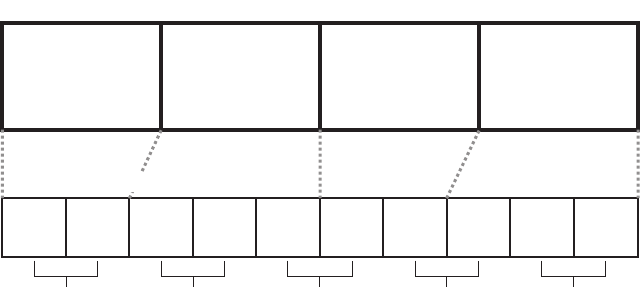
98
Appendix A, Understanding Pulldown
Overview
Depending on your project’s video output format, a pulldown may be required to
convert 23.98 fps video to 29.97 fps or 59.94 fps video for output on MXO2 (see
Appendix D, “Matrox MXO2 Supported Output Formats”). When a pulldown is
required for your video output, Matrox MXO2 performs either a standard 2:3:2:3
pulldown or an advanced 2:3:3:2 pulldown. You can select your desired pulldown
method in MXO2’s video output settings.
2:3:2:3 pulldown (standard)
2:3:2:3 pulldown, also known as standard 2:3 pulldown, is often used as part of
the telecine process to transfer 24 fps film footage to 29.97 fps interlaced video.
This pulldown method is also used to convert any 23.98 fps progressive video to
29.97 fps interlaced video, such as for converting 486p @ 23.98 fps video to
NTSC.
In order to convert 24 fps film or 23.98 progressive video to 29.97 fps interlaced
video, additional video frames, and more specifically video fields, must be
created and added to the video sequence. For example, to convert a sequence of
four film or progressive frames, five frames of video are needed for a total of 10
video fields. Therefore, one additional video frame or two video fields must be
created. To accomplish this, the first and third frames of a four-frame film or
progressive video sequence are each converted to two video fields. The second
and fourth frames of the sequence are converted to three video fields to make up
a total of five interlaced video frames.
The following diagram demonstrates the process:
Standard 2:3:2:3 pulldown is accomplished by representing the first frame of film
or progressive video (frame A) as two fields of video (fields a1 and a2), the
second frame (frame B) as three fields of video (fields b1, b2, and b3), the third
ABCD
a1 a2 b1 b2 b3 d2d1c2c1 d3
Film frames @ 24 fps or progressive frames @ 23.98 fps
Video fields @ 29.97 fps
Frame A Frame C Frame DFrame B Frame E


















